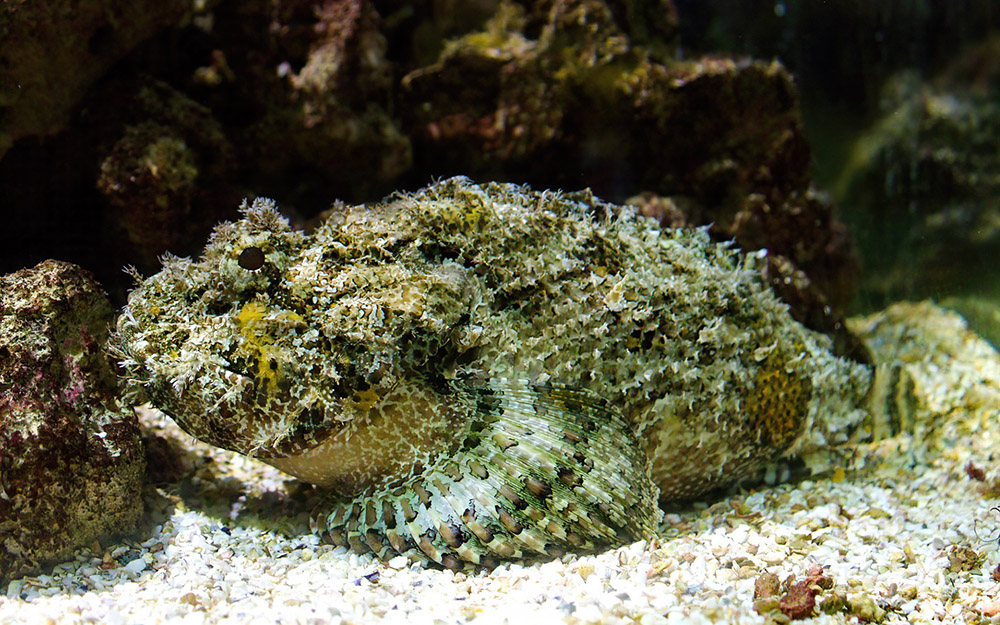Estuarine stonefish
(Synanceia horrida)

Classification
General data
Synanceia horrida, the estuarine stonefish, hollow-cheek stonefish, horrid stonefish, rough stonefish or true stonefish, is a species of venomous, marine ray-finned fish, a stonefish belonging to the subfamily Synanceiinae which is classified as being within the family Scorpaenidae, the scorpionfishes and their relatives. It is a benthic fish which is found in the Indo-Pacific region. This species is considered to be one of the most dangerous venomous fish in the world. It is a popular exhibit in public aquaria and is found in the private aquarium trade.
Description
Synanceia horrida is a drab coloured benthic fish which can be brownish-grey to reddish or greenish-brown. The skin has no scales but is covered in warts and often has growths of filamentous algae on it. The head is depressed with small, widely spaced eyes which sit high on the head and are upwards directed. There is a deep pit behind and under each eye. The large mouth is almost vertical and has a wide gape and fringing cirrhi on the lips. The pectoral fins are large and fleshy. There are 13 or 14 spines and 6 soft rays in the dorsal fin, the second to fourth spines being longer than the others. The anal fin has 3 spines and 5 soft rays. This species reaches a maximum total length of 60 cm (24 in).
Distribution and habitat
Synanceia horrida is found in the Indo-Pacific region where it extends from the eastern coast of India to Papua New Guinea, north to southern Japan and south to Australia.
In Australia it is found from Shark Bay in Western Australia around the tropical northern coast to Coffs Harbour in New South Wales. The estuarine stonefish is found on sheltered inshore reefs and in estuaries, frequently in the shallowest water in coral rubble and rocks on reef flats, as well as in seagrass beds.











